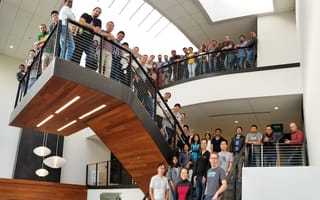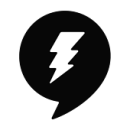In the tech world, engineers are a revered, almost mystical breed. They build the products upon which a company is built — and fix them when they break. Engineers are like magicians to the rest of us, conjuring strange and often beautiful creations with a flurry of keystrokes. We talked to engineers at six Seattle-area tech companies to learn what sets their particular teams apart, and what they look for in new members.

Hiya provides caller ID information, helping users filter and block spam and robo calls. Spammers perennially shift their tactics, and Hiya’s engineering team is constantly working on updates to counter them. The company spun out of Whitepages in 2016, and its algorithms currently protect tens of millions of people against unwanted spam calls in every nation on Earth.
Several of Hiya’s software engineers told us what it’s like to code at this unique Seattle company.
What is it like to work as an engineer at Hiya?
“Working in Hiya is truly unique in that you have the opportunity to wear many hats and interact with different stakeholders. The impact of each individual on all projects can be tremendous. Also, you will have the opportunity to work with multiple OEMs and to have your code shipped to millions of devices.” — Leon Cheng, Senior Software Engineer
The impact of each individual on all projects can be tremendous.”
When you’re hiring engineers, what characteristics and experience do you look for?
“Hiring engineers is an important part of any company’s success, and as such we take those decisions seriously. The biggest indication of a successful engineer comes down to two aspects:
- Can they learn the relevant things that they don’t already know? Sometimes, we find an engineer who has the exact experience required, but the underlying technology is always changing. As such, it’s more important to evaluate if they will be able to keep pace with all the changes.
- Will the engineer be able to not only work with, but also empower other team members? We want to foster an environment where engineers challenge and promote each other to do better.
If we find a candidate who meets these criteria, they will usually move forward with our interview process.” — Evan Johnson, Software Engineer
Does your team have any fun traditions?
“We occasionally go on a food adventure and try out authentic cuisines. We even take a water taxi to find best places to eat in Seattle. In addition to our food adventures, we also have the ‘coffee walk’ tradition. Even if you are not a coffee lover, you can join our group to get some fresh air.” – David Kim, Software Engineer
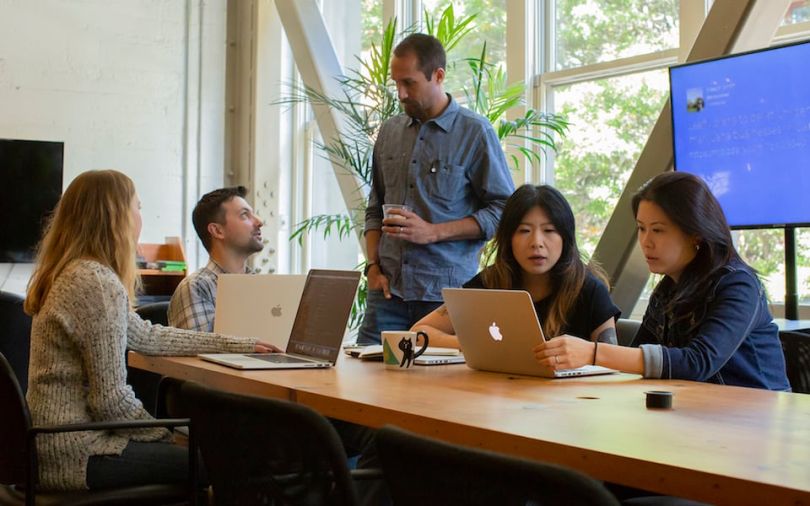
As cannabis gains mainstream acceptance and legal recognition, it is acquiring a culture of sophistication and connoisseurship similar to that of wine, beer and fine liquors. Leafly is playing a major role in this transformation, acting as a resource for users to compare notes and find various strains of cannabis. Users can access peer reviews to help avoid strains that may induce unwanted side effects, as well as Leafly’s cannabis news and cultural content.
Leafly Director of Engineering Leslie Zavisca gave us the lowdown on what life is like on her team.
What is it like to work as an engineer at Leafly, and what makes your team’s culture unique?
At Leafly, our engineers work closely with product owners and designers in autonomous, cross-functional teams. This structure is relatively new to Leafly, and we are already seeing the benefits. Our teams set our own roadmaps and are able to focus on one shared goal. We’re empowered to do all of the work ourselves, and we take no dependencies on other teams.
In addition to our cross-functional teams, we also have independent technical platform leads who are focused on broader architecture, standards, best practices and technical guidance. This allows us to deliver business outcomes while making sure we’re consistently preserving and enhancing our technical integrity.
We respect each other and genuinely enjoy working together. We also regularly hang out after work (on purpose, even!). Friendly debates about the best solution to a problem, random chats in the kitchen about anything and everything and fist bumps and hoorays after shipping are all normal parts of life at Leafly. It’s common to swing your chair around to ask your neighbor a question (unless they have headphones in, of course), and then get an invite to happy hour after they’ve helped you.
The most successful engineers at Leafly are pragmatic. They’re able to balance writing beautiful code with shipping valuable solutions to our users on a regular basis.”
When you’re hiring engineers, what characteristics and experience do you look for?
Like all engineering teams, we look for solid technical skills and the ability to quickly ramp up on new tools and technologies. We also value curiosity, a genuine passion for learning and a healthy obsession with problem solving.
Strong candidates have the right balance of depth and breadth. We’re always looking for people who will add unique experience and expertise to the team, and who are also willing to roll up their sleeves and do the work required to help get the job done.
The most successful engineers at Leafly are pragmatic. They’re able to balance writing beautiful code with shipping valuable solutions to our users on a regular basis, and they’re good at communicating early and often about tradeoffs so there are no surprises.
Does your team have any fun traditions?
Our holiday parties are second to none. We also eat together as often as possible. Sometimes, this means running out as a small group to get a quick lunch. Other times, the entire company comes together to share a family meal at the same time in the same place. We like to celebrate our wins and we’re proud of the community we’ve built.

OfferUp helps users post and sell used goods. The platform offers a range of improvements on its competitors, including an in-app messaging service and designated pickup points for users who worry about safety. The company is one of Seattle’s few unicorns, and recently raised $39 million as part of a much larger fundraising effort.
Software Development Engineer Will Shelor told us what it’s like to work on this ambitious coding team.
What is it like to work as an engineer at OfferUp, and what makes your team’s culture unique?
OfferUp has three core values that drive the way we work and interact with our teams: Driven, Neighborly and Adaptable (or DNA). These values drive a lot of our culture and are core to how we work together in the office.
Being driven means we want to think and move quickly, and creatively remove barriers that get in our way. As an engineer, there’s a lot of speed to our processes. And since OfferUp is a startup, there’s minimal red tape, and decisions are made by the team and worked in real time — instead of decrees coming down from several levels above.
Neighborly means that even when we’re working with people we may disagree with, we try to remember it’s us against the problem, not an individual against their coworker. We’re on a rocket ship moving upward and we all have seats on it.
We’re on a rocket ship moving upward and we all have seats on it.”
Adaptable shows itself most through the many opportunities we get to work on, which are new and exciting products and features. For example, I’m an Android developer and we once had some iOS bugs that needed to be fixed. I had interest in working on different code, so a few colleagues on the iOS team kindly showed me where I could dive in and make a difference.
When you’re hiring engineers, what characteristics and experience do you look for?
We always aim to bring on people based on their technical expertise and passion, but everything always comes back to our core values — does this person fit into our DNA? Being Neighborly is a big deal — because we’re a smaller company, we treat each other like a family that cares, has fun together and solves issues together. We also look for people who see their success and value as part of the team dynamic, and not necessarily just opportunities for individual recognition.
Does your team have any fun traditions?
On Tuesdays we have a ‘Lunch & Learn,’ and every Friday we have ‘Drinks & Demos.’ Both are opportunities for a division of the company to give a talk with free lunch or drinks provided and share details about the work they do and what makes their team special. Because of these, I’ve learned more about the culture and community of our product than I would have otherwise. I have a broader vision of the company and feel more enabled to be a better collaborator.
Plus, every quarter, our team hosts an offsite and goes to a fun place around Seattle to learn more about each other and our upcoming goals. Offsites are a great way to get to know the people on your team in an environment that is not exclusively work based. I can say that I definitely count some of my colleagues as true friends.
Oh, and we have no-meeting Wednesdays, so we can increase efficiencies and reduce distractions from constant meeting popups. We try and do that every day, but Wednesdays are sacred.
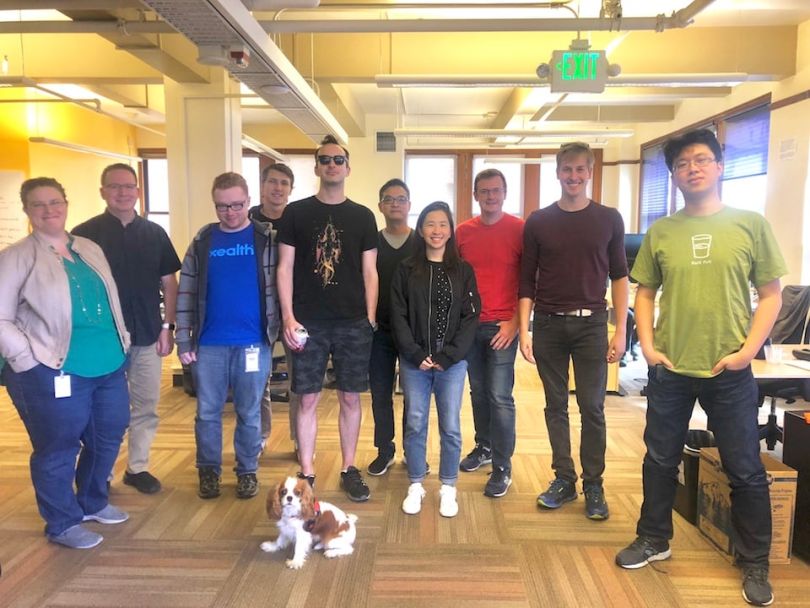
Doctors use the cloud-based Xealth platform to digitally share exercise programs, treatment regimens and reading material with patients. Physicians can also check in on patients’ progress and see if they’re actually following treatment plans. The company has delivered well over 200,000 programs and videos since it spun out of Providence Health and Services in 2017.
Software Engineer Matt Hendricks had plenty of insight into the coder’s life at Xealth.
What is it like to work as an engineer at Xealth, and what makes your team’s culture unique?
Each week we have a standup meeting that combines the engineering team with Xealth’s leadership, business development and the product teams. Since the founders of our company were at the helm of Swype — and have built a several companies from the ground up — we get an experienced perspective on our entire company’s goals and progress.
We are encouraged to host talks to share knowledge about various projects and interesting topics. I’ve personally sat through sessions that have included the CEO of the Swedish Hospital health system, discussing how integration works within a health system’s Electronic Health Record system and 3D game design considerations. I’ve had the chance to lead a discussion on running machine learning studies and the basics of differential privacy.
One great part about Xealth’s culture is that it is flexible. We try as an organization to let the job suit the engineer, and focus on productivity over office time. As an example, one of our leads was allowed to go to Spain for a month to build guitars.
Engineers are encouraged to take on leadership positions within projects in and outside of our role. Within a few months I was writing and implementing specs to redesign our data infrastructure and I had fun organizing a company potluck.
Engineers are encouraged to take on leadership positions within projects in and outside of our role.”
When you’re hiring engineers, what characteristics and experience do you look for?
Besides strong coding fundamentals, we look for a strong history of collaboration, drive to take ownership and desire to learn from one another.
Does your team have any fun traditions?
Impromptu lunches in the game room (with the occasional bout on the video games) and the odd (or is it daily?) ping pong match. As far as traditions, every month the employees of Xealth head to the top of Smith Tower Observatory for happy hour, and we also enjoy a monthly game night. We also have impromptu after work get togethers, celebrate birthdays and share in life milestones.

Drift connects consumers directly with renewable energy providers, using complex software solutions to bypass the ranks of middlemen that have crusted onto the power grid over time. The company uses machine learning and blockchain technology, and claims it can save 10 to 20 percent off electricity bills.
Principal Software Engineer Mark Markaryan gave us a peek inside Drift’s engineering team culture — Mario Kart and all.
What is it like to work as an engineer at Drift, and what makes your team’s culture unique?
‘Designs should help people avoid errors, and minimize the negative consequences of errors when they do occur.’ At Drift we strive to apply this design principle to what we build and how we build it. It’s kind of nice to know that fat-fingering a number is unlikely to cause catastrophic consequences.
I like it that we seem to want to get out of the way. Instead of putting ourselves in the critical path and trying to be the ‘expert’ and ‘the only person’ who knows or can do X, we strive to turn our knowledge, decisions and routines into maintainable, automated processes so we can move on and build something more valuable.
We strive to turn our knowledge, decisions and routines into maintainable, automated processes so we can move on and build something more valuable.”
When you’re hiring engineers, what characteristics and experience do you look for?
We look for a number of qualities, including a commitment to an objective reality; truthfulness, being able to grok the big picture while having the pragmatism to build what’s needed now, being careful about what’s true and what’s an assumption, being able to wrap complexity behind simple interfaces, curiosity about the tools of the trade, curiosity about the problems at hand, and an interest in making the whole team succeed.
Does your team have any fun traditions?
I really like our deep, deep commitment to Mario Kart — from having a company Nintendo Switch, to the projector/wall we play on.
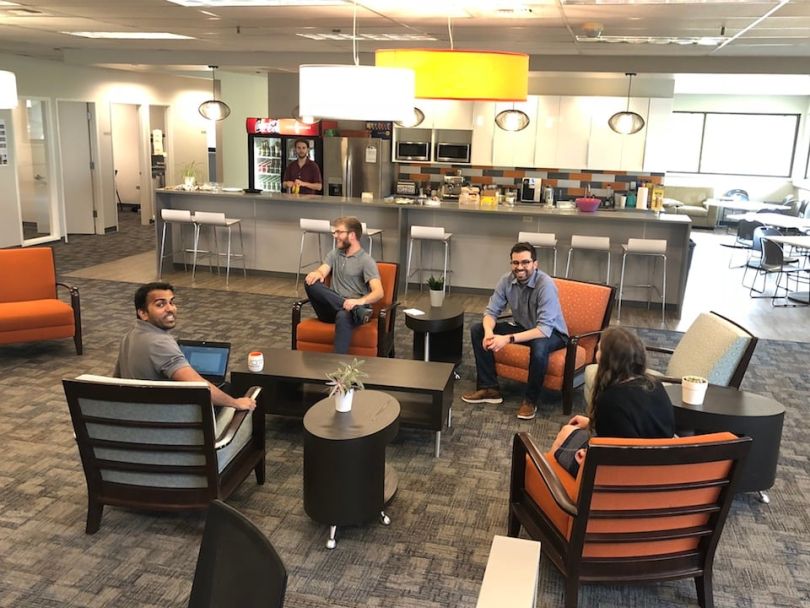
Pivotal Commware’s Holographic Beam Forming technology allows wireless service providers to reuse the same band of spectrum at the same time within a certain spatial region, enabling focused communications protocols between a base station and a user. The technology has applications in everything from cell towers to military drones, and the company is in the process of raising a $20 million Series B.
Several members of Pivotal Commware’s engineering team filled us in on what it’s like to work with such complex technology on a daily basis.
What is it like to work as an engineer at Pivotal Commware, and what makes your team’s culture unique?
“As an Embedded Hardware Systems Engineer at Pivotal Commware, I work on projects that include analog to high-speed circuit design, FPGA coding and system integration. A typical day for me consists of working cross-functionally with software, hardware, mechanical and RF teams to develop cutting-edge technologies and solve highly complex integration issues. From my previous experience working in aerospace — where projects would span decades, and have engineers cycle through portions of the design-to-delivery cycle — individual contributions felt much less impactful and personal.
As a startup with a small but highly experienced team, design cycles are very fast and individual contributors make significant impacts to the success of the project. Although there are sprints that require long hours, the company emphasizes work-life balance and routinely hosts happy hours and luncheons.” — Jordan Read, Embedded Hardware Systems Engineer
Bringing together people who have worked in telecommunications, defense, consumer products and a wide variety of industries results in better and more innovative products.”
When you’re hiring engineers, what characteristics and experience do you look for?
“I look for engineers who are flexible and adaptable: Pivotal has so much interesting and exciting work, I want to hire engineers who aren’t afraid to design new types of systems that they haven’t seen before. I firmly believe that bringing together people who have worked in telecommunications, defense, consumer products and a wide variety of industries results in better and more innovative products.” — Dr. Alex Katko, Director of Product Engineering
Does your team have any fun traditions?
“Monday night cards, ping pong tournaments (complete with robot ping pong and extreme ping pong), monthly team happy hours and monthly team business lunches.” — Ross Bennett, Recruiting and Josh Pfleeger, Program Manager
